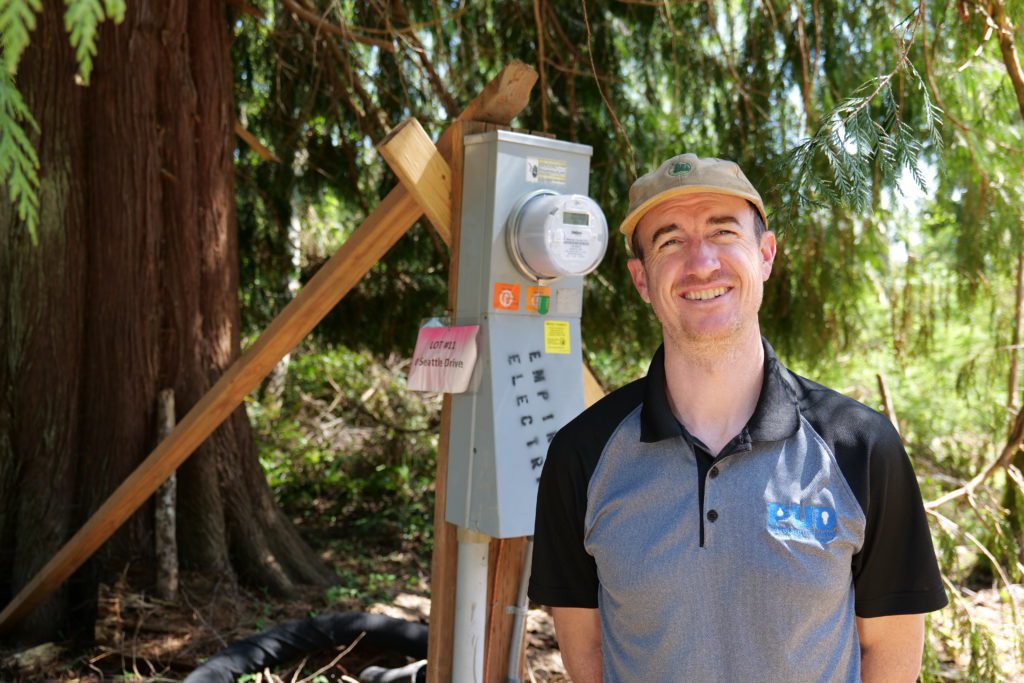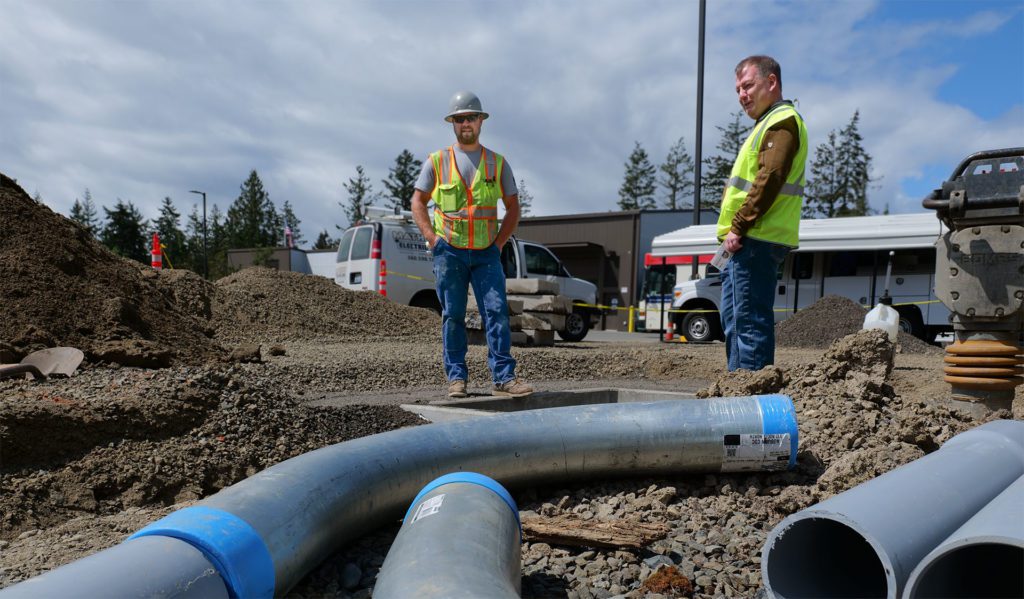A Lot at Stake – PUD Staking Engineers

It’s a bright, beautiful day on the Toandos Peninsula along Thorndyke Drive, and PUD Staking Engineer, Russell Miller stands in the shade of a massive western red cedar tree. Beside him the property owner, Mike, poses questions about the electric connection to his future home build.
Each site presents new challenges: Distance to existing PUD equipment, rough terrain, utility easements—even Mike’s favorite giant cedar tree. Everything must be accounted for when deciding a route for power to the home.
“I really like working with landowner-builders because they ask great questions and it’s fun to see their enthusiasm,” said Miller.
Whether a PUD capital project like the undergrounding of downtown PT power lines or a homeowner building their dream home, staking engineers like Miller ensure wires, transformers, meters, and much more are sized properly and placed for best use.
The staking engineer role covers all corners of the county and provides a pulse on the growth of the region. Miller has averaged 200 staking jobs per year, with that number trending downward slightly as the building market cools.
Jefferson PUD’s electrical engineering team act as a resource for PUD customers to navigate the process of connecting to the grid.

“Two-thirds of my week is spent combing over maps, talking to customers, and working up material schedules,” Miller said. The rest is spent in the field meeting with homeowners and project leads.
Miller describes this early step as the “ground truth”. In the case of Mike’s property this involves plotting likely avenues for the 32-inch-deep trench needed for undergrounding the conduit and wire for the future home.
Miller returns to the office and begins to connect the dots. Utilizing mapping software, he provides the best lowest-cost solution for bringing power to the site. Finer details, such as installation standards and project timelines, are discussed with the customer prior to submitting for a county permit.
The staking process takes time, often longer than 6 weeks start to finish. Walking customers through the steps needed for service is vital to understanding the timeline and what is required by the customer for installation. Trenching and conduit placement are customer responsibilities.

Staking engineers work closely with multiple departments within the PUD to ensure service is delivered to the customer. They coordinate with customer service for establishing a new service, warehousing for materials needed and purchasing, accounting for billing of services, and line crews to make the final connection. The PUD engineering team is led by electrical engineering manager, Jimmy Scarborough and includes Miller, staking engineer Lori Rae, and GIS mapping specialist, Alex Gerrish.
There’s a lot at stake when a PUD staking engineer hits the field, but the time it takes to design utilities ensures greater reliability for the future.